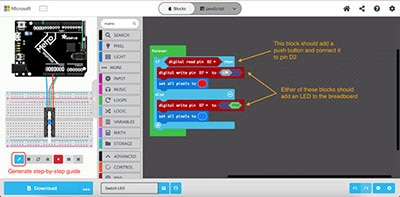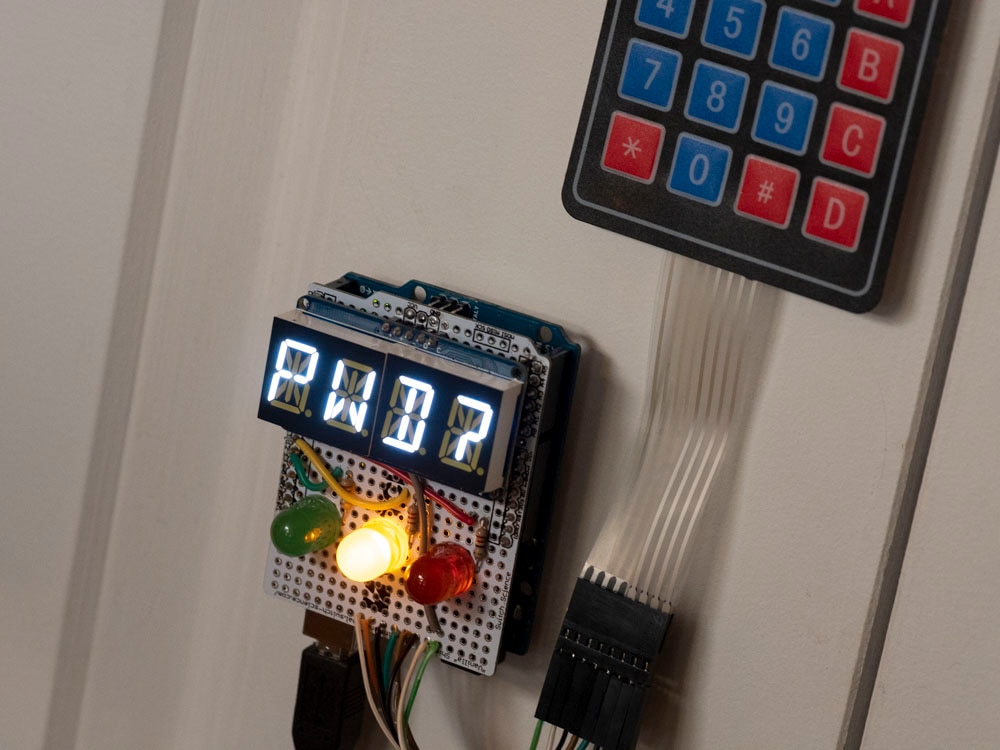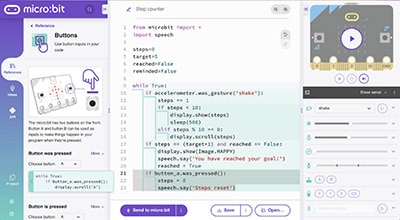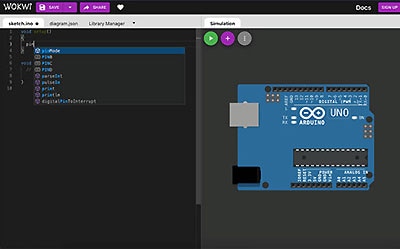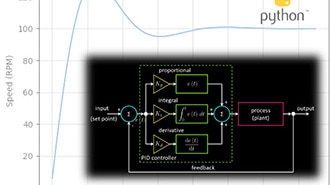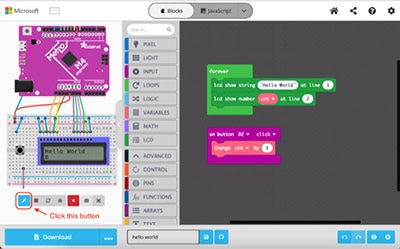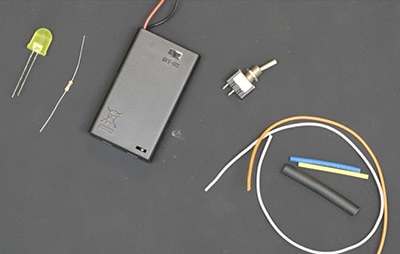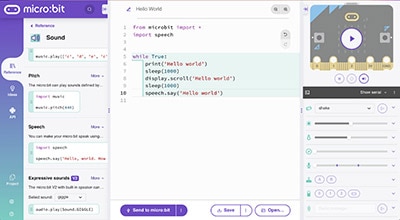Getting Started with Tinkercad Circuits
2022-04-04 | By Maker.io Staff
Tinkercad Circuits is a popular digital and analog electronics simulator for hobbyists, students, and makers. A previous article explored Tinkercad as well as a few other alternative simulators worth trying. This article explains how you can get started using Tinkercad circuits in your projects or a STEM class.
Creating Your First Project in Tinkercad Circuits
Visit the Tinkercad website to create a new Autodesk account or log in to an existing account if you have previously created one. Note that the Tinkercad website combines a few products helpful in all sorts of hobbyist projects. One example is the original Tinkercad CAD program. However, this article focuses on Tinkercad circuits. Therefore, make sure to select the circuits option in the left toolbar and then click the green button to create a new circuit design:
 This image shows the Tinkercad Circuit dashboard. Use the green button to create a new project.
This image shows the Tinkercad Circuit dashboard. Use the green button to create a new project.
The website displays your existing projects below the green button. You can manage, edit, and share previously created projects by clicking on one of the images. Once you click the green button, the program takes you to your new circuit design:
 This image highlights the most important buttons and toolbars in the Tinkercad Circuits UI.
This image highlights the most important buttons and toolbars in the Tinkercad Circuits UI.
The UI might look a bit complicated at first, but it’s simple to use once you get the hang of it. The app displays all the components you can place in your design in the panel on the right side of the UI. Drag and drop a part to the center area of the UI to add it to your design. You can rotate components using the app’s main menu bar or pressing the r-button on your keyboard. The main menu bar also lets you delete parts, undo and redo actions, add notes to your design, and change wire colors and connector types.
The three buttons in the top-right corner of the program let you switch between different views. The simulator window is the first view, and it’s open by default. The second view contains an auto-generated schematic diagram of your design, and the third view lets you export a BOM that lists all the components you added to your circuit.
Creating a Simple Arduino-Based Project
Start your design by placing an Arduino UNO board and a breadboard in the app’s main working area in the center of the UI. You can use the search bar in the component panel on the right-hand side of the program to quickly find parts. Then, drag and drop components into the design. Note that you can often show additional options to adjust component values by single-clicking on a part:
 Click on a component to adjust its behavior.
Click on a component to adjust its behavior.
For this simple test project, place five buttons together with their respective pull-up resistors, an LED, and a piezo speaker on a small breadboard. Then, connect the components to the Arduino board as shown in the following picture:
 Connect the components in your design according to this image.
Connect the components in your design according to this image.
Programming the Arduino and Simulating the Circuit
Once you’ve made all the connections as shown in the picture above, click the Arduino board to select it. Then, click the code button in the top-right corner of the app. When it first opens, the code panel will look like this:
 By default, the code editor uses the Blocks view. You can switch between modes by clicking the highlighted button.
By default, the code editor uses the Blocks view. You can switch between modes by clicking the highlighted button.
You can use the highlighted button to switch between the Blocks editor and a regular source code text editor. I prefer the latter option, as I find it faster and more convenient. Either way, paste the following code into the text editor to program the Arduino:
unsigned long lastMillis = 0UL;
unsigned int toneFrequency = 0UL;
void setup()
{
pinMode(A1, INPUT);
pinMode(A2, INPUT);
pinMode(A3, INPUT);
pinMode(A4, INPUT);
pinMode(A5, INPUT);
pinMode(A5, INPUT);
pinMode(2, OUTPUT);
pinMode(8, OUTPUT);
digitalWrite(2, HIGH);
}
void loop()
{
unsigned long currentMillis = millis();
if(currentMillis - lastMillis > 100)
{
if(digitalRead(A1))
toneFrequency = 500;
else if(digitalRead(A2))
toneFrequency = 550;
else if(digitalRead(A3))
toneFrequency = 600;
else if(digitalRead(A4))
toneFrequency = 750;
else if(digitalRead(A5))
toneFrequency = 1000;
else
toneFrequency = 0;
lastMillis = currentMillis;
}
if(toneFrequency > 0)
tone(8, toneFrequency, 100);
}
Then, close the code panel. If you leave it open, Tinkercad Circuits runs the simulation in debugging mode, which I found was slower than regular execution. Once you’re ready, click the run simulation button next to the code button. The simulation should start, and you should be able to click the buttons and hear a sound coming from the piezo speaker on the virtual breadboard.
Other Useful Features for Makers
Next to the start simulation button, you can find another button to export and share your design. Tinkercad circuits can export your design as a PNG file or an EAGLE/Fusion360 board design file. With this board design file, you can take your experiment and turn it into a PCB design. Then, you can order a few PCBs online and build a professional-grade physical version of your virtual design.
 Click the "Send to” button in the top right corner of the app to reveal all export options Tinkercad Circuits offers.
Click the "Send to” button in the top right corner of the app to reveal all export options Tinkercad Circuits offers.
As mentioned earlier, you can also download an auto-generated schematic for your design. Use the three buttons in the top-right corner of the app to switch between views:
 Tinkercad Circuits can also auto-generate a schematic for your design.
Tinkercad Circuits can also auto-generate a schematic for your design.
Summary
Once you get the hang of it, Tinkercad Circuits is an intuitive and fast tool for simulating all sorts of circuits, including Arduino-based designs. You’ll have to sign up for a free Autodesk account to use the app. Once logged in, start a new project from the app’s dashboard page or load an existing one.
Once you finish your electronic design, you can use the built-in code editor to define the behavior of certain programmable parts. For Arduino boards, you can use a blocks editor or a more traditional source code editor. Next, you can simulate your circuit within Tinkercad Circuits.
Lastly, the tool offers a few handy features for makers. You can automatically generate a schematic diagram for your design, and you can export your circuit to Autodesk EAGLE or Fusion360 to create a PCB layout.











